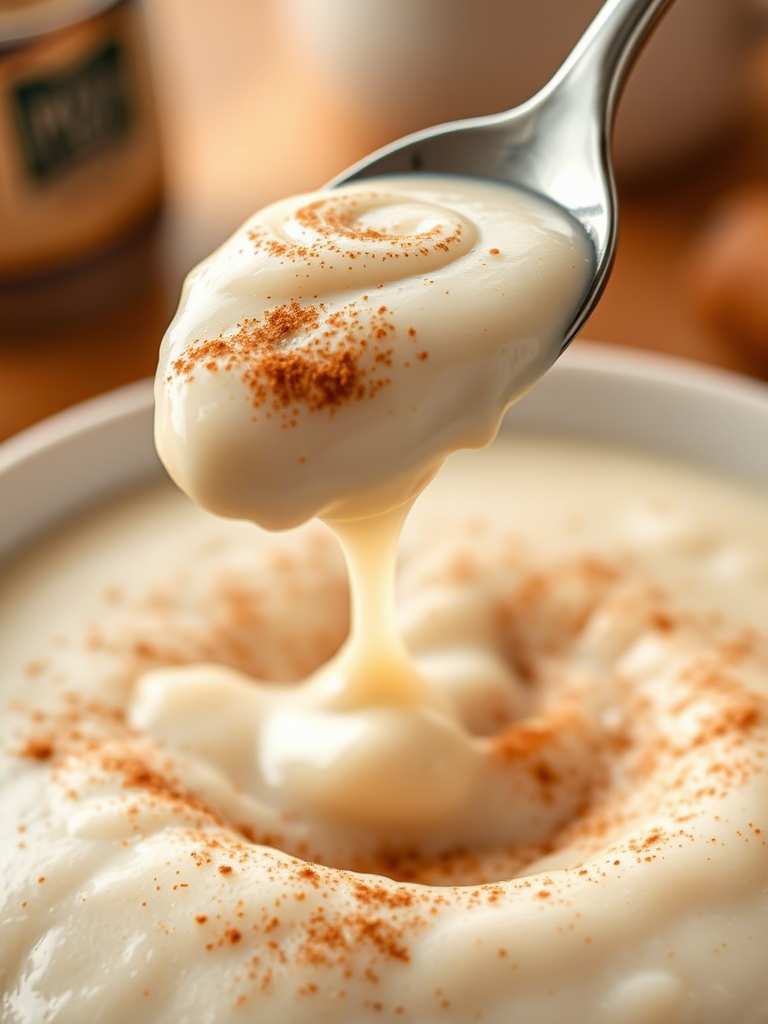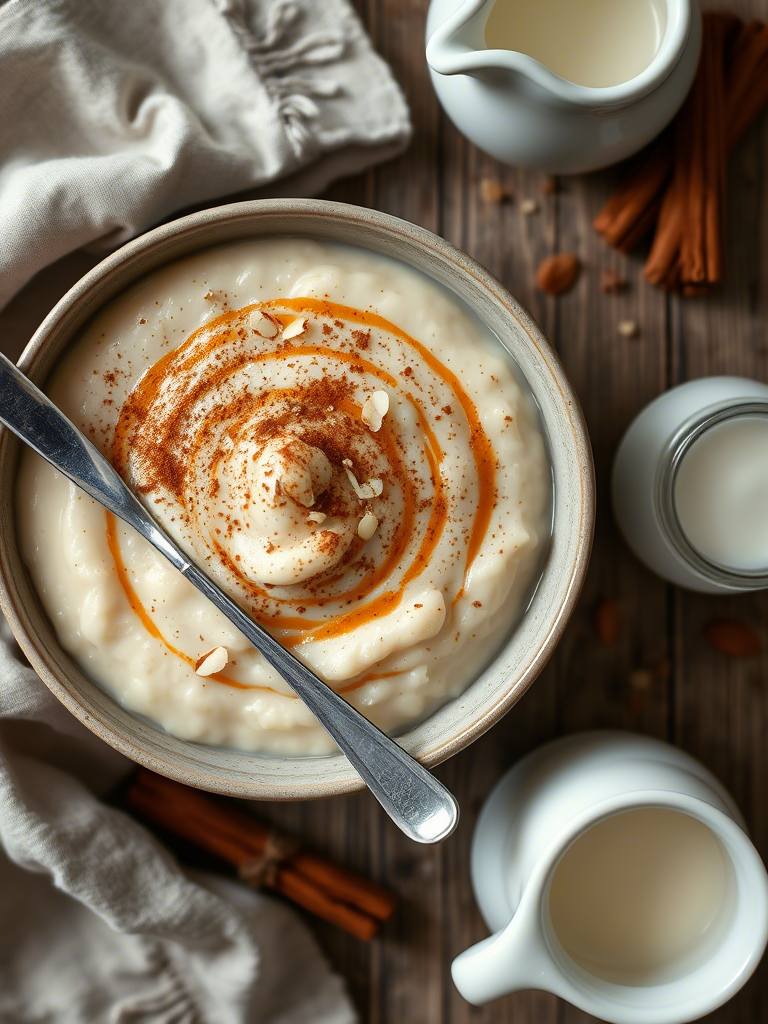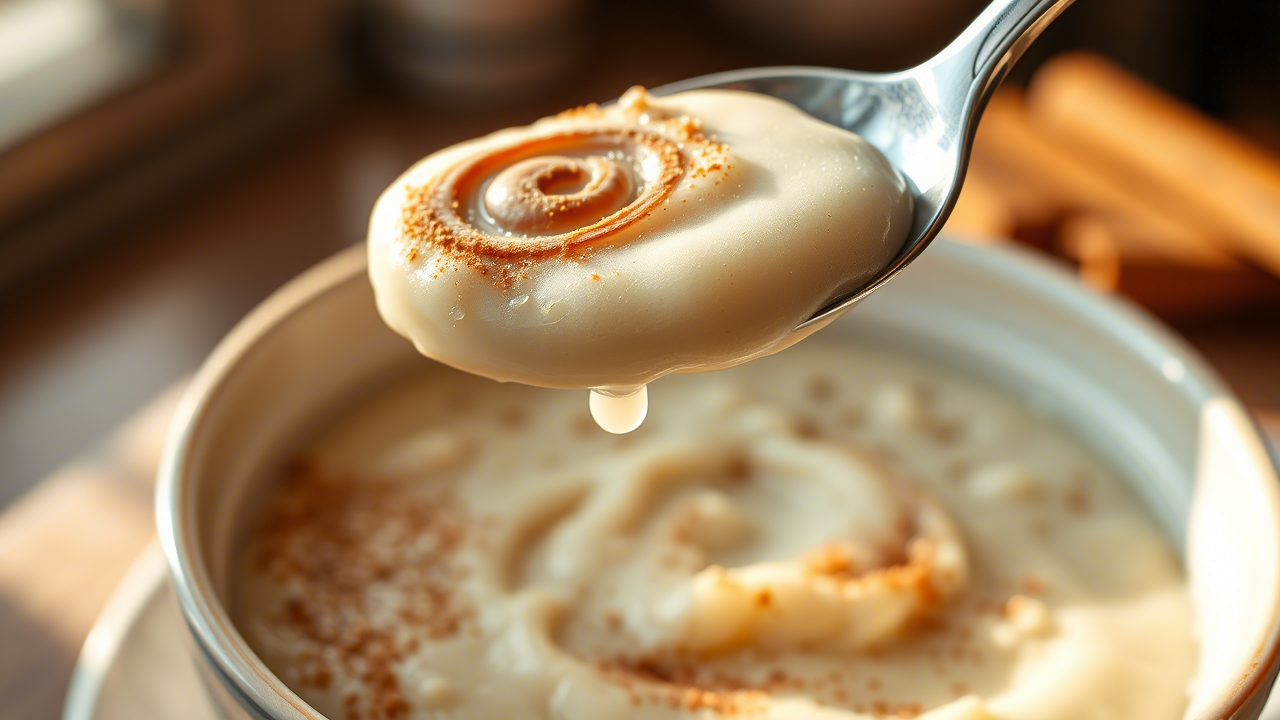There’s a quiet kind of magic in a bowl of creamy rice pudding. No frills. No garnish drama. Just warmth, memory, and indulgence dressed in a whisper of cinnamon. If you’re a chef, pastry dev, or food stylist chasing the next reinvention of nostalgia—this dish is your stage. And if you think rice pudding’s just grandma food, you’re not tasting it right. Or making it right.
This article is for professionals who need to get past the basics. We’re digging into the why behind texture, the chemistry of the starch, the heat curves, and even how different types of rice push or pull the final product. This isn’t your average sweet-milk-rice guide. It’s a deep dive into how to make rice pudding sing in a commercial kitchen, on a tasting menu, or in a five-dollar takeaway box that tastes like heaven.
Let’s rip it open.
The Architecture of Comfort: Why Rice Pudding Works
Comfort foods hit because they tick certain boxes: creamy, warm, nostalgic, carb-heavy, and soft on the spoon. Rice pudding checks all five in one go. It’s built for emotional impact.
But emotionally powerful doesn’t mean easy to execute well. Ask any seasoned pastry chef who’s had to remake a batch that split or set up too thick. A good rice pudding is about control—of time, temp, and milk-to-rice ratio. You can’t just chuck rice in milk and hope it cuddles its way to perfect.
Now here’s the kicker—this dish is nearly 4,000 years old. Historians trace milk-rice desserts back to ancient Persia and India, where it started as kheer. Cinnamon didn’t hit the bowl till much later when it flowed through spice trade routes. And wow, once it arrived, it stayed. That warm, woodsy hum? It isn’t just garnish—it’s an aromatic anchor.
Choosing Your Rice: Not All Grains Are Equal
This is where professionals often get tripped up. Using the wrong rice is like playing jazz on a toy piano. You can do it, but why would you?
Short-grain white rice is the standard. Arborio works beautifully if you’re after more chew and creaminess from starch. Sushi rice too—don’t sleep on that. It clings, and that’s a win here. Long-grain rice? Meh. Too lean. It stays aloof in the pot, doesn’t soften into the emulsion the way it should. And don’t get me started on parboiled rice—it’s dead on arrival for pudding.
For ultra-silky texture, broken jasmine rice has a cult following in Thai kitchens. It’s partly pulverized so it melts down, thickening from within without turning gluey. Kind of like a pudding whisperer.

Milk Matters (More Than You Think)
Don’t default to whole milk just because your mise is on autopilot. There’s logic here. The fat content in dairy affects mouthfeel, color, and even caramelization rate.
Whole milk gives you the classic profile: rich, but not overbearing. Add a splash of heavy cream if you want to push it into custard territory. But too much and you’ll mute the rice’s natural sweetness. Skim milk? Only if you’re legally obligated. It’s like running a bakery with margarine—possible, but please don’t.
And now for a game-changer: evaporated milk. This is used in Mexican arroz con leche and gives the pudding a deep, toasty flavor note you won’t get with fresh dairy. It also cuts down on cooking time because it’s already reduced.
The Starch Game: Managing Creaminess Without Slop
Starch is where most chefs screw the pooch. Over-stirring releases too much, and you end up with sludge. Under-stirring leaves the milk weeping on one side of the bowl. You want something in the middle—gentle agitation that lets starch leak just enough to bind the pudding.
This is not risotto. You’re not massaging cream out of the rice with a wooden spoon. Use a spatula and be patient. One stir every 2–3 minutes is plenty.
Also: never rinse the rice beforehand. That first layer of surface starch is your ally, not your enemy. Lose it, and you’re going to need to thicken with egg yolk or cornstarch, which changes the dish into something else entirely.
Sweetness & Cinnamon: Balance, Not Bludgeoning
Sugar is functional. It’s not just about taste—it affects viscosity, cooking temp, and even how the rice swells. Aim for around 80–100g of sugar per 1L of milk. That’s a good place to start. Too much sugar locks in the proteins and makes the pudding more prone to curdling. It also kills the spice note.
Cinnamon should be subtle—barely there until you notice it. Ground cinnamon burns fast in high heat, so either bloom it early in a little butter, or steep a stick and remove before plating.
Try Saigon cinnamon (C. loureiroi) if you want an aggressive, almost red-hot note. But for a warm, background hum, Ceylon (true cinnamon) is your friend. It plays nicer with vanilla and citrus.

Temperature & Timing: No Room for Guesswork
Here’s where experience really shows. Rice pudding’s texture develops in layers. First, the rice cooks. Then, it starts to release starch. Then, the milk reduces. Then, the emulsion thickens. Then and only then do you get that spoon-coating viscosity we crave.
Cook too fast, and the milk scorches before the rice hydrates. Too slow, and the grains burst, giving you rice soup.
Aim for a low simmer. About 85–90°C if you’re being clinical. This is hot enough to gel the starch, but cool enough to keep the dairy stable. Use a diffuser if your burners are aggressive. Better to take an extra 15 minutes than rescue a pot of split pudding.
Variations That Still Respect the Roots
Look, rice pudding’s been global since before globalization was a word. You can spin it without losing its soul.
- Middle Eastern: Use rose water, cardamom, and pistachios. Gilded and floral.
- Nordic: Add a dried bay leaf and serve with tart cherry compote.
- Japanese: Sub in amazake or sweet sake for part of the milk. Fermented umami, next level.
- Indian: Kheer-style with saffron, golden raisins, cashews, and ghee.
All these variations still revolve around the same axis—gentle rice, rich milk, and just enough sugar to lift it.
Shelf Life & Service: A Pro’s Perspective
Rice pudding is a rare dessert that holds well in both hot and cold service. But texture evolves in the fridge. Starch retrogrades. The creaminess tightens. For restaurant service, reheat gently with a splash of milk to restore fluidity.
It can live in the fridge 3–4 days, tightly sealed. Beyond that, it starts to sour subtly—even before it smells. Trust your palate more than your prep label.
For plating, you’ve got range. A quenelle in a wide coupe dish with brûléed sugar on top reads French and formal. A ladle into a stoneware bowl with cinnamon dusted like snow? Cozy and casual. And a tiny jar with a lid and spoon for takeaway? Looks like a hug you can hold.
Addressing Common Mistakes (And How to Dodge ‘Em)
- Rice still hard after 45 mins: You probably cooked too hot early on, sealed the starch. Start lower, add more milk.
- Split or grainy pudding: Milk got too hot, or sugar was added too early. Always heat milk and rice first, then add sugar.
- Gluey texture: Over-stirred. Let it sit between stirs, give the starch room to settle in naturally.
- No cinnamon flavor: Ground cinnamon added too late. Either steep a stick, or bloom the powder early in the process.
The Numbers: A Quick Data Shot
- Ideal rice-to-liquid ratio: 1:5 by volume
- Cooking temp range: 85–90°C (185–194°F)
- Standard sugar level: 8–10% of liquid weight
- Average yield: 6–8 servings per liter of milk
- Commercial cost per serving: $0.35–$0.50 raw cost, depending on dairy
Final Stir: Why It Still Matters
Rice pudding endures because it doesn’t pretend. It’s humble but technical, comforting yet precise. You can mess it up, or you can elevate it to something bordering on profound.
For pros, it’s a brilliant canvas for technique. From dairy science to starch behavior to spice blending—every spoonful is a chance to show restraint, skill, and respect for tradition.
Whether you’re developing a winter menu, opening a boutique bakery, or pitching nostalgic desserts to a new-gen audience—don’t overlook it. Rice pudding isn’t basic. It’s foundational. And when done right, it’s unforgettable.
Now go—make something warm, creamy, and cinnamon-kissed. Just don’t stir it like risotto, yeah?
FAQs
What type of rice is best for creamy rice pudding?
Short-grain white rice like Arborio or sushi rice works best for texture and starch release.
Can I use long-grain rice for rice pudding?
You can, but it won’t give the same creaminess or cohesive texture—too separate and lean.
Should I rinse the rice before cooking?
Nope—rinsing removes surface starch, which is key for thickening the pudding naturally.
What’s the ideal milk for rice pudding?
Whole milk is classic, but a bit of heavy cream or evaporated milk deepens flavor and richness.
Why did my rice pudding split?
Probably too much heat or sugar added too early—dairy doesn’t like being rushed or shocked.
How do I avoid gluey, over-thick pudding?
Stir gently and infrequently—over-stirring releases too much starch and breaks the structure.
How long does rice pudding last in the fridge?
3 to 4 days max, but texture tightens over time—reheat with a splash of milk to loosen.
Is cinnamon essential for rice pudding?
Not strictly, but it adds warmth and aroma that defines the comfort profile of the dish.
Can I make vegan rice pudding?
Yes, with plant milks like oat or coconut, though texture and flavor will shift noticeably.
Can I serve rice pudding cold?
Absolutely—it’s delicious chilled, though a bit thicker, so loosen it slightly before serving.

Mariana is a passionate home cook who creates delicious, easy-to-follow recipes for busy people. From energizing breakfasts to satisfying dinners and indulgent desserts, her dishes are designed to fuel both your body and hustle.
When she’s not in the kitchen, she’s exploring new flavors and dreaming up her next recipe to share with the Foodie Hustle community.

